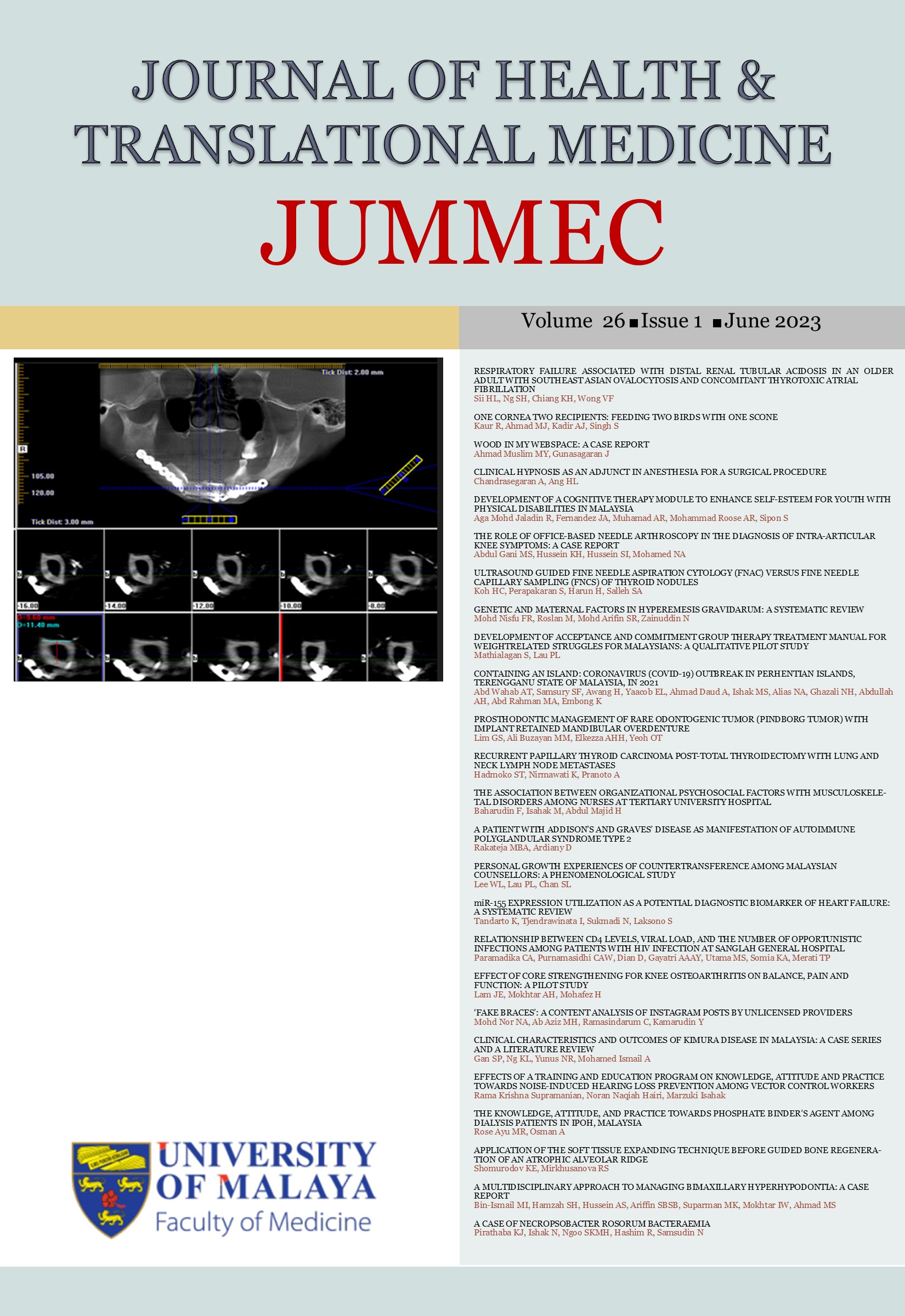RECURRENT PAPILLARY THYROID CARCINOMA POSTTOTAL THYROIDECTOMY WITH LUNG AND NECK LYMPH NODE METASTASES
Received 2022-08-01; Accepted 2023-01-30; Published 2023-02-27
DOI:
https://doi.org/10.22452/jummec.vol26no1.12Keywords:
Papillary thyroid carcinoma, thyroid malignancy, thyroidectomy, lymph node metastasis, therapy adherenceAbstract
Thyroid malignancy, although rare, serves as the most common type of all endocrine glandmalignancies and papillary thyroid carcinoma (PTC) represents approximately 70%-90% of thyroid malignancies with a low incidence of distant metastases. We reported a case of a patient with recurrent PTC post-total thyroidectomy with lung and colli dextra metastases. The patient presented to Dr. Soetomo Hospital with a chief complaint of recurrent enlarging non-tender lumps on the neck anterior and dextra since March 2018. The patient had a history of total thyroidectomy in 2016 and received levothyroxine therapy. Two years post-surgery, however, the patient stopped the medication due to boredom. Laboratory investigation showed low free thyroxine (FT4) and increased thyroid stimulating hormone (TSH). Ultrasound examination revealed the presence of multiple lesions in the left and right thyroid fossa, assumingly originating from recurrent residual masses. Multisite lymph node metastases were recorded. FNAB was performed and confirmed the recurrent PTC in the colli anterior and dextra. The patient was diagnosed with stage IVB (T2N1bM1) recurrent PTC post-total thyroidectomy with lung and colli dextra lymph node metastases and hypothyroidism. The patient was treated with levothyroxine 100 mg daily and radioactive iodine (I-131) ablation, and scheduled for thyroidectomy. This case highlights the critical continuous levothyroxine therapy in PTC patients with post- thyroidectomy. Adequate understanding of patients about the disease is therefore critical as well as to maintain their therapy adherence.
Downloads
Downloads
Published
Issue
Section
License
All authors agree that the article, if editorially accepted for publication, shall be licensed under the Creative Commons Attribution License 4.0 to allow others to freely access, copy and use research provided the author is correctly attributed, unless otherwise stated. All articles are available online without charge or other barriers to access. However, anyone wishing to reproduce large quantities of an article (250+) should inform the publisher. Any opinion expressed in the articles are those of the authors and do not reflect that of the University of Malaya, 50603 Kuala Lumpur, Malaysia.


